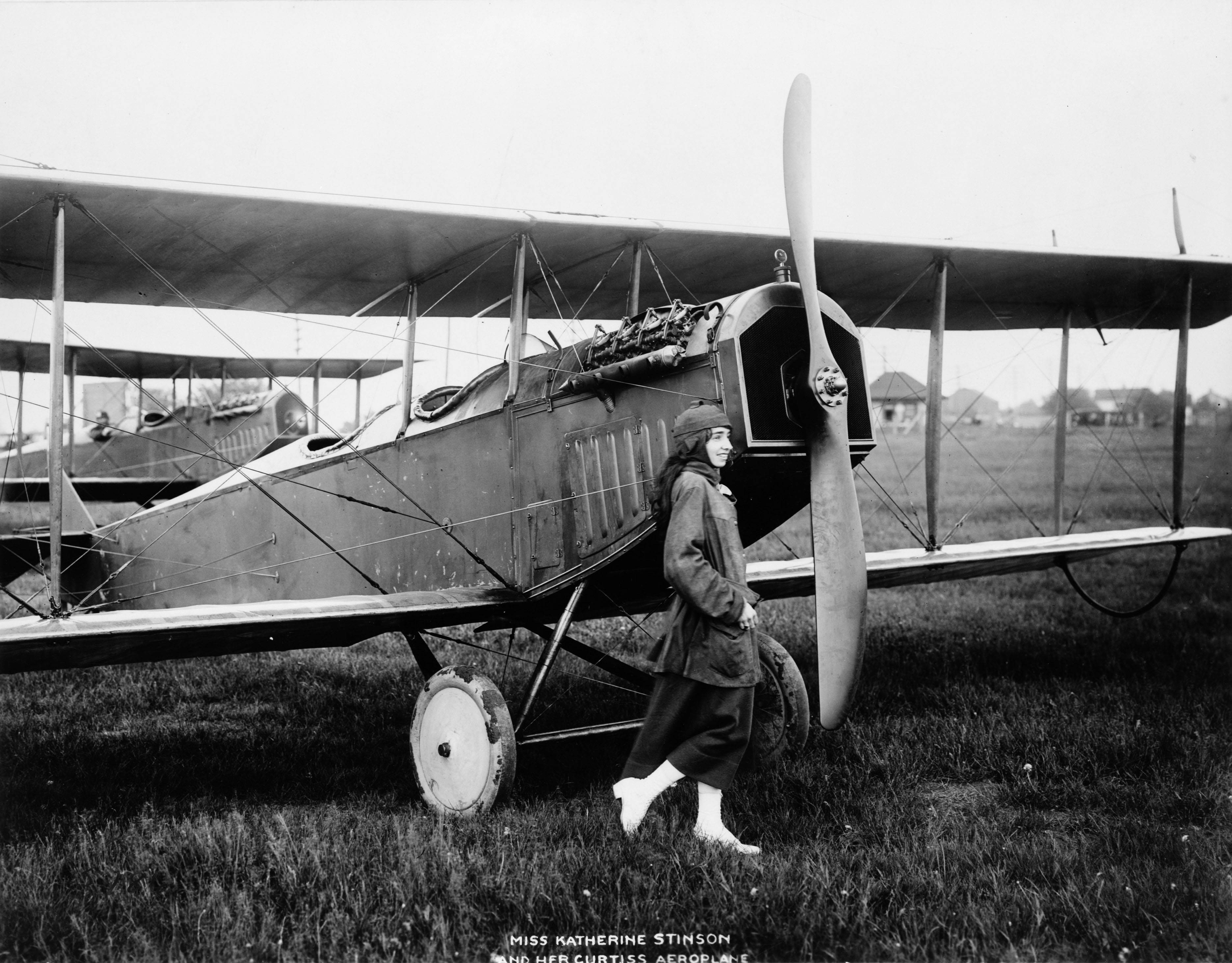Introduction
If you follow Work5hop on social media, you probably couldn't help but notice that we -- along with our teammate, Brantley Hightower of HiWorks Architecture -- won a recent competition to redesign a proposed new control tower at Stinson Field. This is a very important win for our firms, and we're honored to have been selected. We thought that the competition and our design might be worth an article to explain a bit more about both, plus a few words on where we go from here.
History
Stinson Field (technically Stinson Municipal Airport, but called Stinson Field locally, so that's what I'm using here) has a tremendous amount of history -- it's not just any old general aviation airfield. Rather, it's the second-oldest continually-operated field, it was established by a family of aviation pioneers, and it was the home of one of the nation's first flying schools. Oh, and it's located within the Mission Historic District, within spitting distance of two missions. Please don't spit on the missions.
Let's start in 1915. The Stinson family was already prominent in the nascent aviation community. Katherine became the country's fourth licensed female pilot in 1912 and had begun her work as an exhibition flyer. Sister Marjorie and brother Eddie ran the family's flying school, which was housed at San Antonio's Fort Sam Houston. Katherine also worked there as an instructor.
Well, Army posts aren't the best locations for flying schools, and Eddie Stinson decided that a plot of land southeast of San Antonio would be just the place to relocate. The school leased 500 acres from the city of San Antonio for the Stinson School of Aviation, and Stinson Field's history began. Civilian flights were banned during World War I, and the airfield became the city's civil airport shortly thereafter. Katherine continued her flying, setting records for distance and endurance flying, and her brother Eddie moved to Detroit and founded the Stinson Aircraft Company.
Stinson Field continued developing, gaining a Works Progress Administration-built terminal in 1936. It was used for training pilots during World War II and gained a number of buildings, then returned to civil aviation. It's still a popular airport for general aviation. The city has grown around it; neighborhoods now border it on the west, a cemetery is to its north, and the San Antonio River, missions Espada and San Juan Capistrano, and Espada's famous aqueduct border it to the south and east.
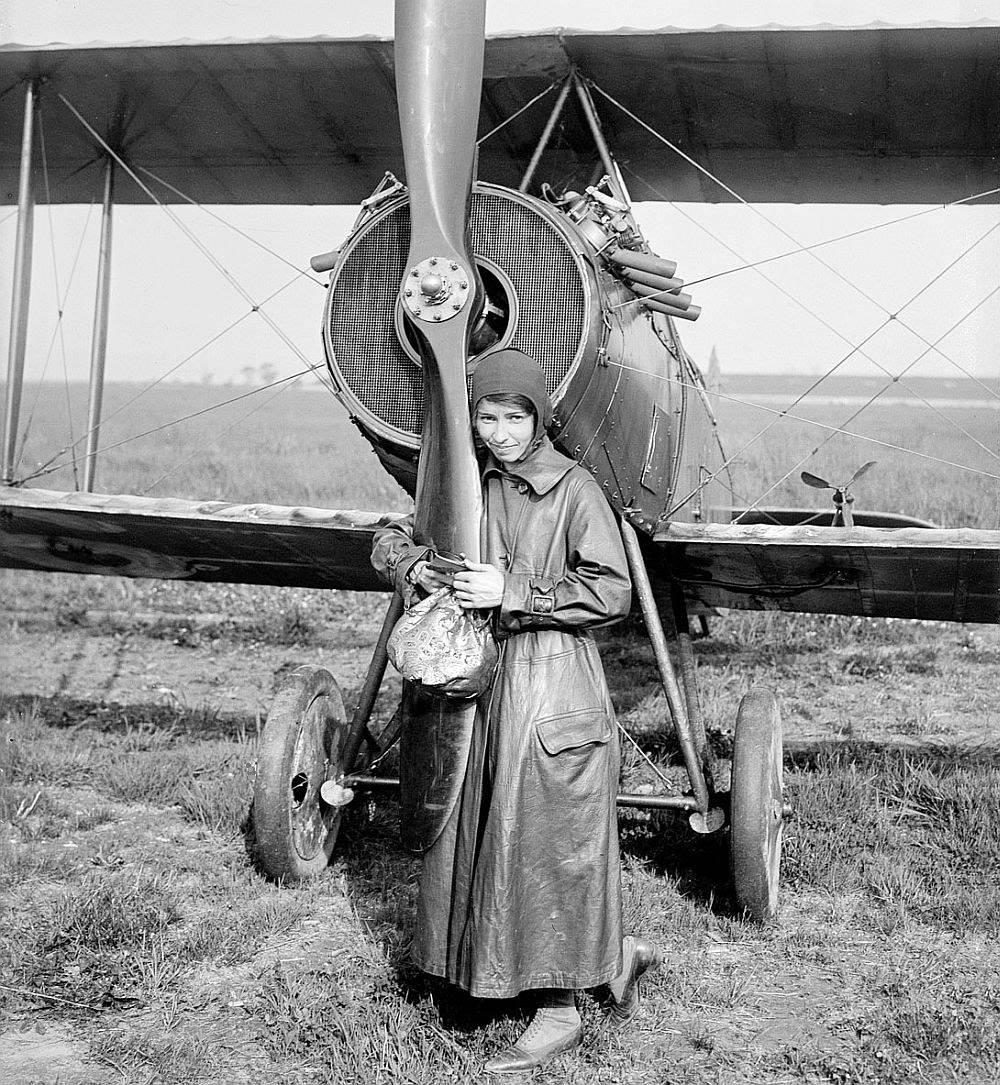
Competition
The Depression-era control tower, though refitted over the years, is not adequate for modern aviation operations. The Texas Department of Transportation (TxDOT) oversees operations at airports of this type. They selected an engineering firm experienced in control towers for general aviation airports, and the team completed a design for the tower. That design focused on the function of a control tower, though, without budget for architecturally interpreting the history of the airfield. To remedy that, city councilpersons Roberto Trevino (District 1) and Rebecca Viagran (District 3) initiated a design competition, administered by AIA San Antonio, to determine a winning design for the new tower.
Because a design had already been completed, and budget is most definitely an issue, one of the dictates of the competition was that the proposed design should be more or less additive to the existing design and buildable without significant disruption to the previously-designed structure. That's fairly limiting, of course, but necessary given the time and budget constraints of construction.
There were 17 entries, which ran the gamut from classicist interpretations of control towers to giant sculptures. The entries are visible at the Rivard Report (which also has a great article on the competition).
We won. By "we," I mean Work5hop together with Brantley Hightower of HiWorks Architecture, our frequent collaborator. We're excited about it.
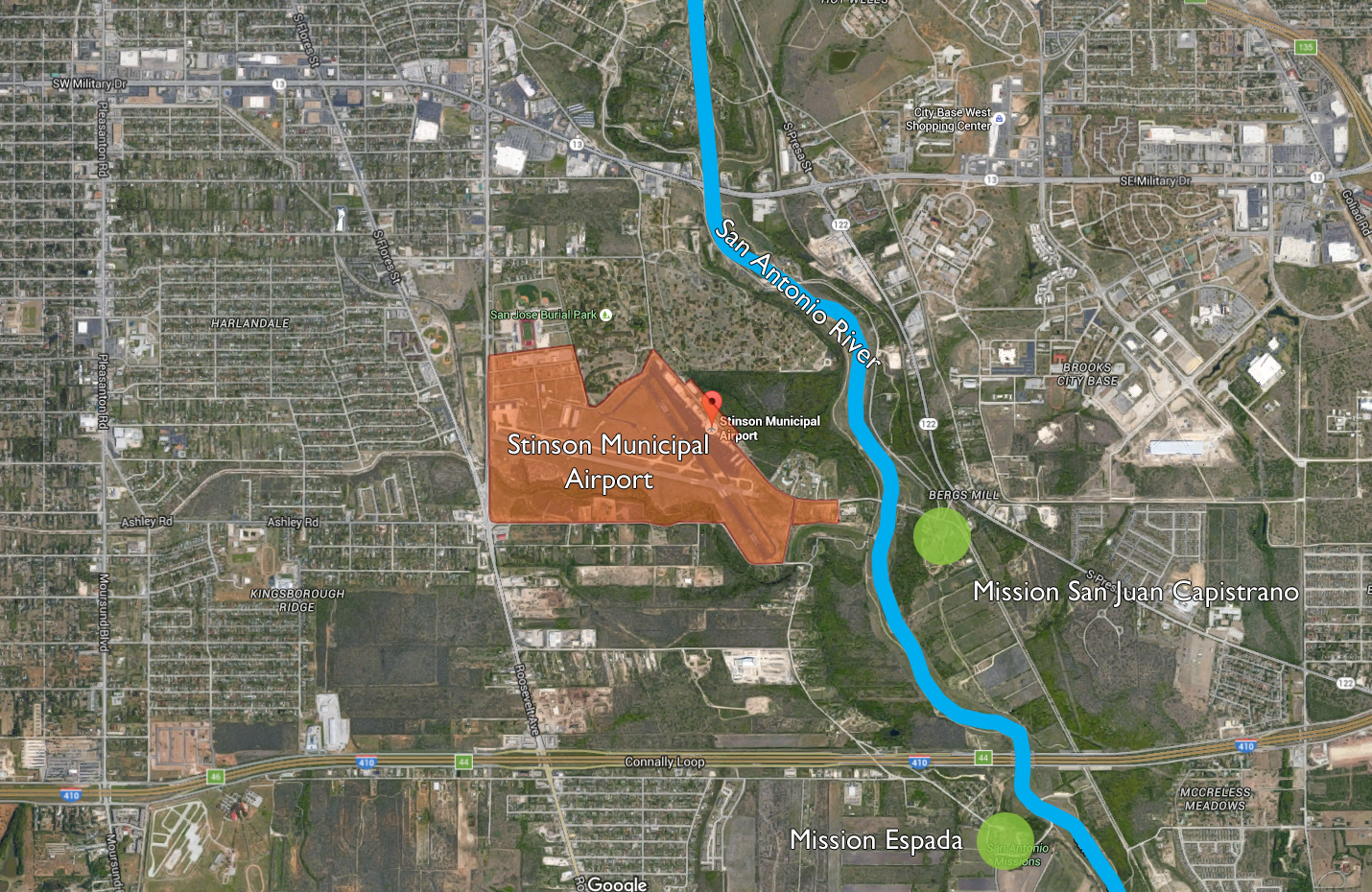
Design
If one accepts that the historical and visual context of a project is important -- and we certainly do -- there are a couple of approaches to understanding the history surrounding Stinson Field. One route is to acknowledge the primacy of the missions to the area. Certainly that's the basic mode of operation for much of the city, judging from the sheer volume of Alamo-inspired profiles around here. The other is to interpret Stinson's own history. As you may have guessed, we chose the latter. Why? We don't think history is a one-note tune. It's important for the historically significant places in our city to be interpreted and understood where they are, for what they are. While the significance of the missions is internationally recognized, it is inappropriate to use all of the resources in the city to buttress that story. The history of Stinson Field, the Stinson family, and the importance of the field to the early days of flight are all stories worth telling.
It should not, I think, take a major intellectual leap to get from the early era of flight to our entry. The airfoil shapes are inspired by the fabric-and-wood wings common on early aircraft, and the cablework also alludes to the cable bracing that many of the earliest of airplanes feature. Our entry is a bit of a one-liner in that regard, but that's also intentional: the tower is only visible from far away, given modern security restrictions, so subtlety would be lost. Imagine standing 100 yards away from someone. You've got to shout to be heard, and that's the case here as well.
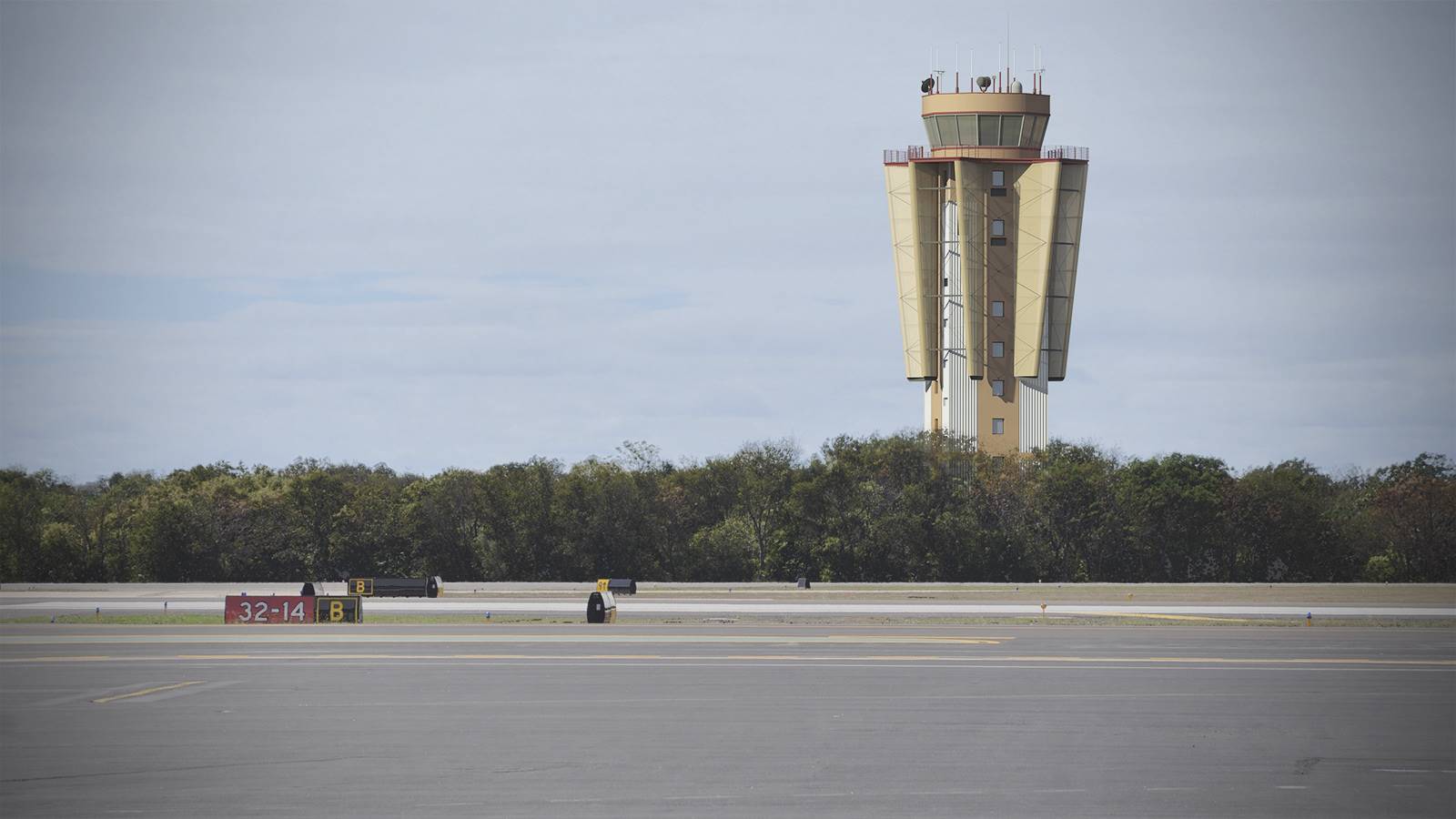
Details and Construction
OK, so there's a little nuance. The major components of the design are translucent-ish fabric airfoils, and those are just the kind of thing that look most lovely glowing at night. So we're proposing to use color-changing LED lights. They will ordinarily be set to have a warm, soft, glowing light, but they will also be programmable to reflect the season (yellow for National Potato Chip Day, anyone? Anyone?) or just change slowly through various settings.
Conceptually, the airfoils are pretty simple: tubular and plate steel frameworks, attached to steel plates embedded in the precast concrete of the tower, and clad in painted steel and a high-performance fabric. Their geometry is fairly complicated, though, and the trick -- as always -- is to strike the right balance of easily-fabricated standard components which expedite construction and careful attention to detail which will make the project sing. The cables are likely to be of outsize importance in this; they are potentially the piece which transforms which might otherwise be fairly ordinary slabs into delicately articulated wings.
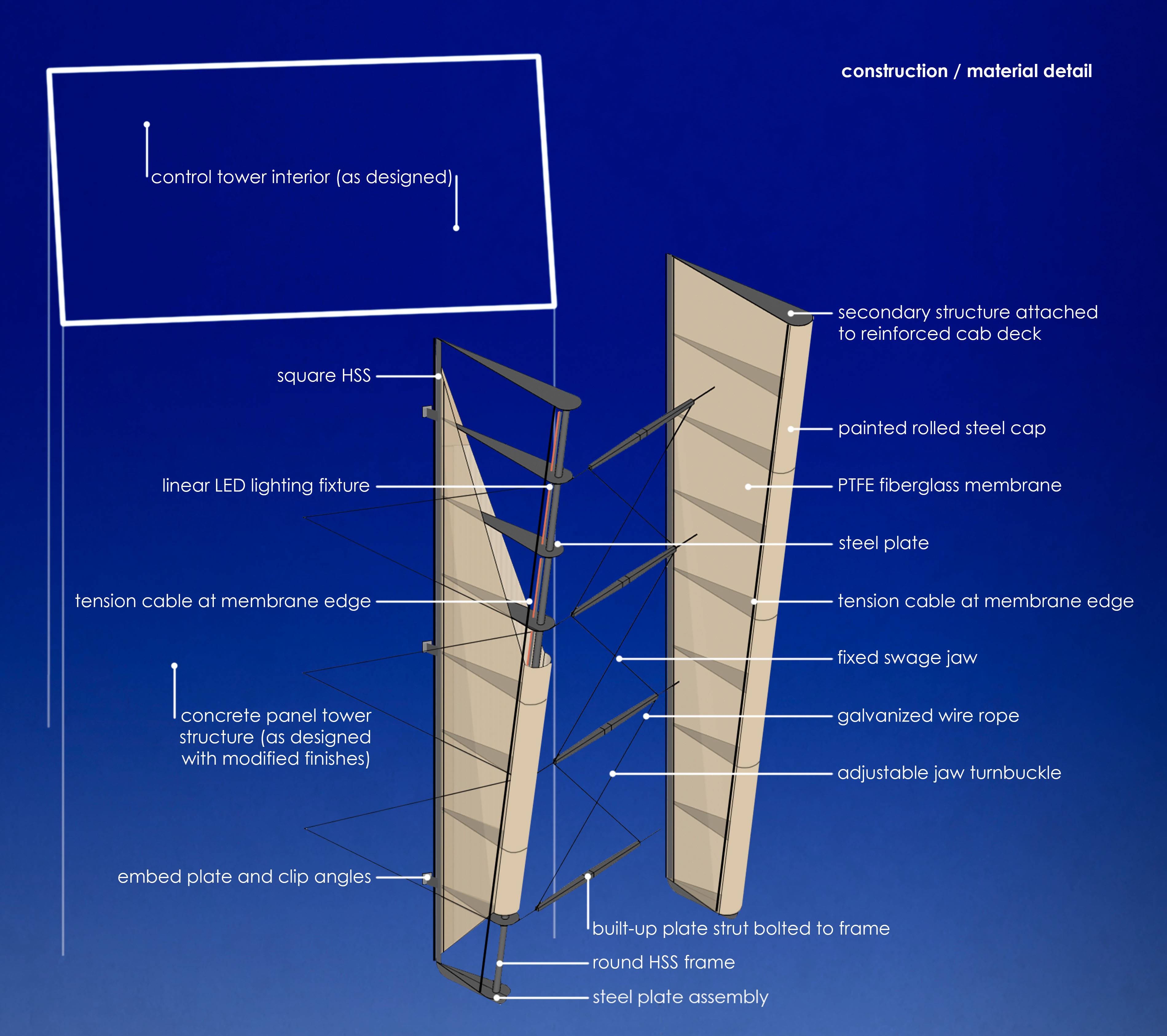

What's Next?
Good question. This is the first time that TxDOT has ever worked with a designer through a competition. The budget is tapped out. The city is the motivating force behind the competition, so it's a question of whether the city designates funds to pay for the additional design and construction necessary. San Antonio has been supporting good design much more forcefully than in the past, so we're hopeful that that's the case here.
We're proud and honored to be selected, and we see it as a major achievement in the lives of both Work5hop and HiWorks. As with any project, though, the trick is to see the big ideas through to the end, and that's the focus now.
